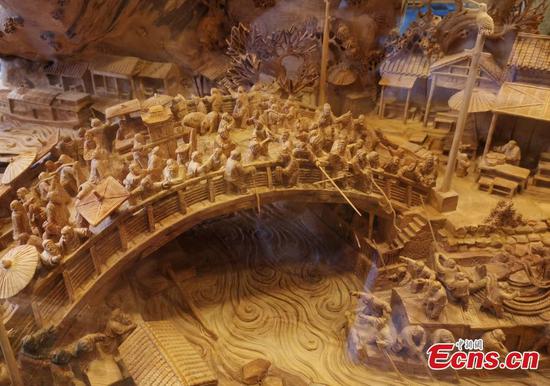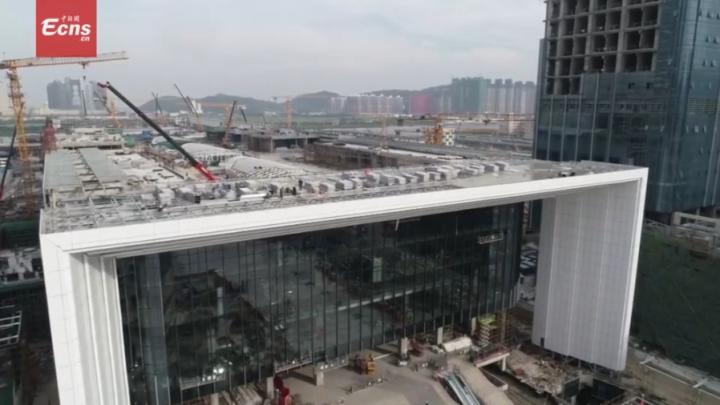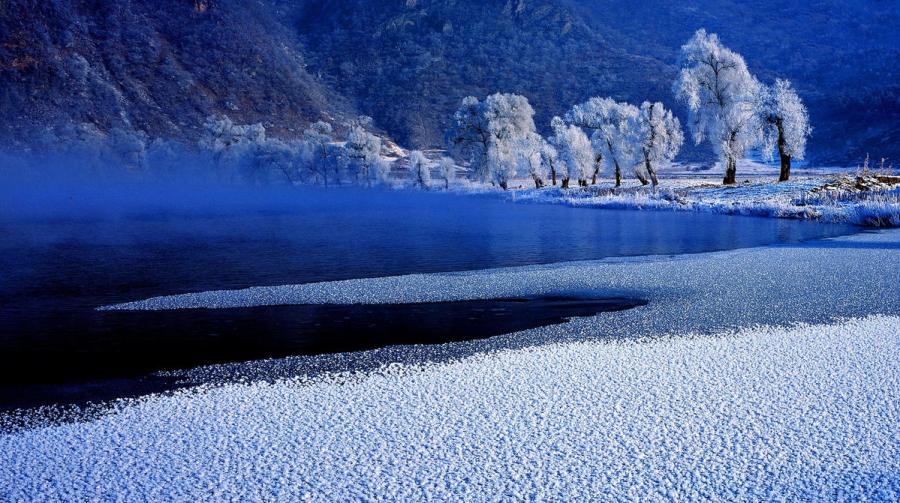
Snow and ice frost trees and the surface of the Taizi River in Northeast China's Liaoning Province. (Photo provided to chinadaily.com.cn)
Benxi Water Cave, a huge cave on the Taizi River in Northeast China's Liaoning Province, has become an internet sensation thanks to snow and ice.
The five-kilometer-long cave is one of the longest underground karst caves in China and mainly consists of two parts, shuidong (water cave) and handong (dry cave).
At the mouth of the cave lies a lake that never freezes in winter, even if the temperature drops to minus 20 degrees. The water vapors on the lake help to form the beautiful rime scenery when it snows.
The water cave's reception hall is 1,000 square meters wide, which could berth 40 boats. Tourists are strongly advised to wear insulated boots, jackets, and gloves because the temperature keeps dropping as the boat goes deeper into the cave.
The oldest stalactite to date is a small stalagmite on the platform about 18 meters from the water surface on the right bank of Yuhuang Palace. Geology experts estimate that it is around 145,000 years old.
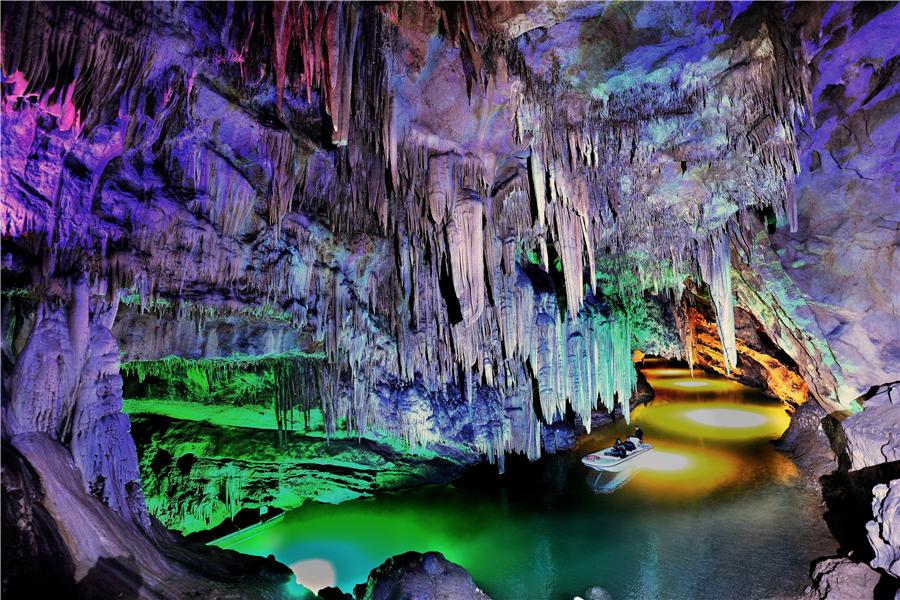
A tourist boat glides through the Benxi Water Cave in Northeast China's Liaoning Province. (Photo provided to chinadaily.com.cn)
The water cave developed in the early and middle period of the Middle Pleistocene in the Quaternary, which is 500,000 years ago, according to Professor Zhu Xuewen, president of the Cave Research Association of China Geological Society.
The Benxi Water Cave was once an ocean around 570 million years ago that housed a large number of stalagmites, brachiopods, gastropods, and ladderworms. Later, with the receding of the sea water, this area slowly rose to land. Limestone is continuously dissolved by external forces during geological movements. After hundreds of millions of years, it gradually developed into today's water cave.
The fissure filled with water and the tunnel enlarged to become an underground river. The dissolution process is still underway today.
The cave's entire internal space is more than 400,000 cubic meters. The widest section is 70 meters wide and 38 meters high, which is barely half the size of the National Center for the Performing Arts of China.
In addition to the water cave, the local government has made use of the unique resources of the dry cave in building the Benxi Geological Museum. It is designed to display the major geological changes and prehistoric relics.
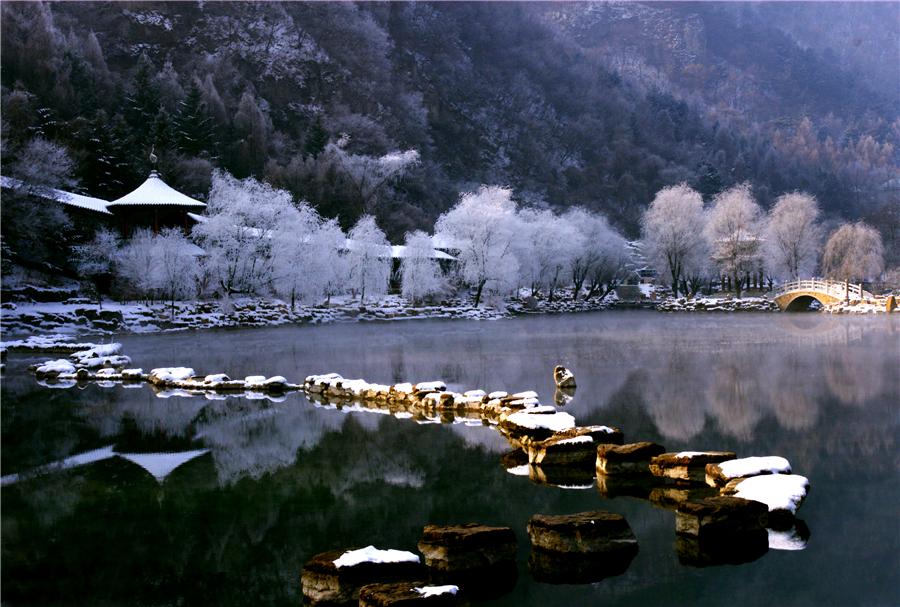
Guqin Lake is seen at the Benxi Water Cave in Northeast China's Liaoning Province. (Photo provided to chinadaily.com.cn)
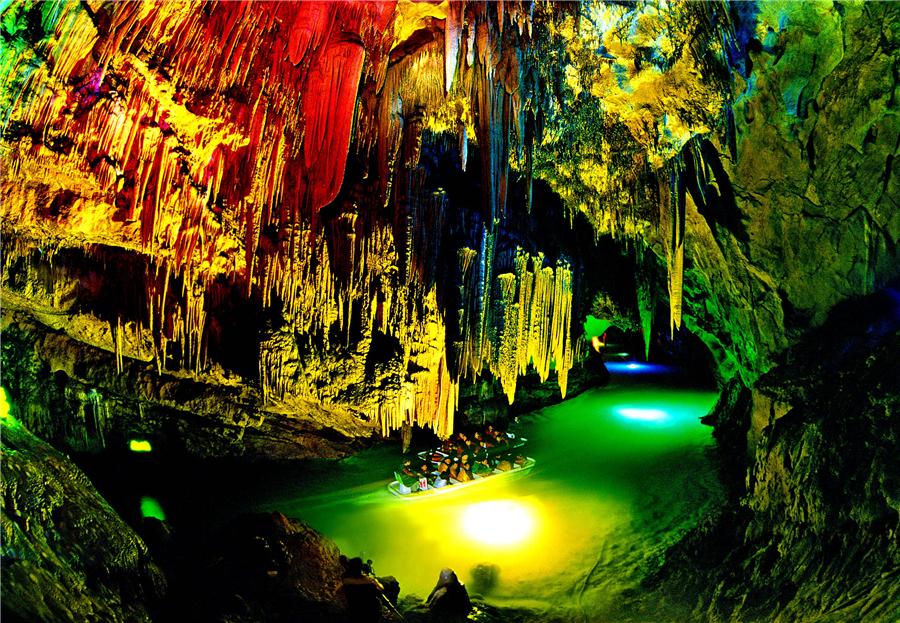
Tour boats glide through the Benxi Water Cave in Northeast China's Liaoning Province. (Photo provided to chinadaily.com.cn)
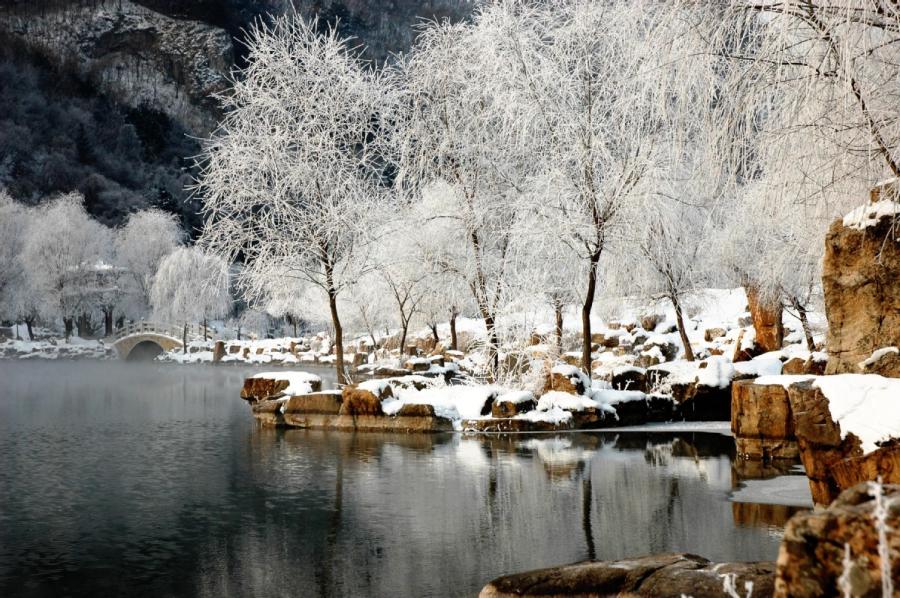
Guqin Lake is seen at the Benxi Water Cave in Northeast China's Liaoning Province. (Photo provided to chinadaily.com.cn)
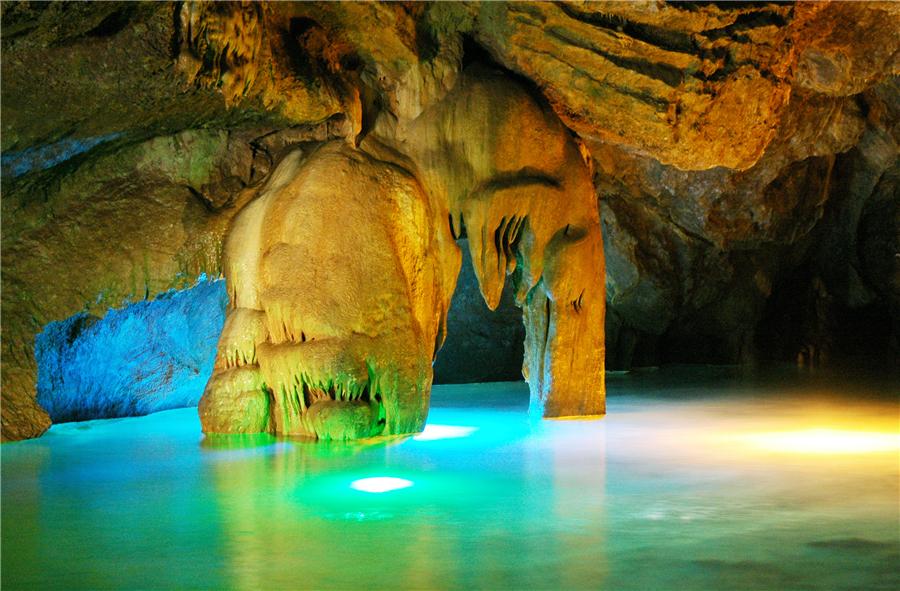
Colored lights shine on the geological formations in the Benxi Water Cave in Northeast China's Liaoning Province. (Photo provided to chinadaily.com.cn)















